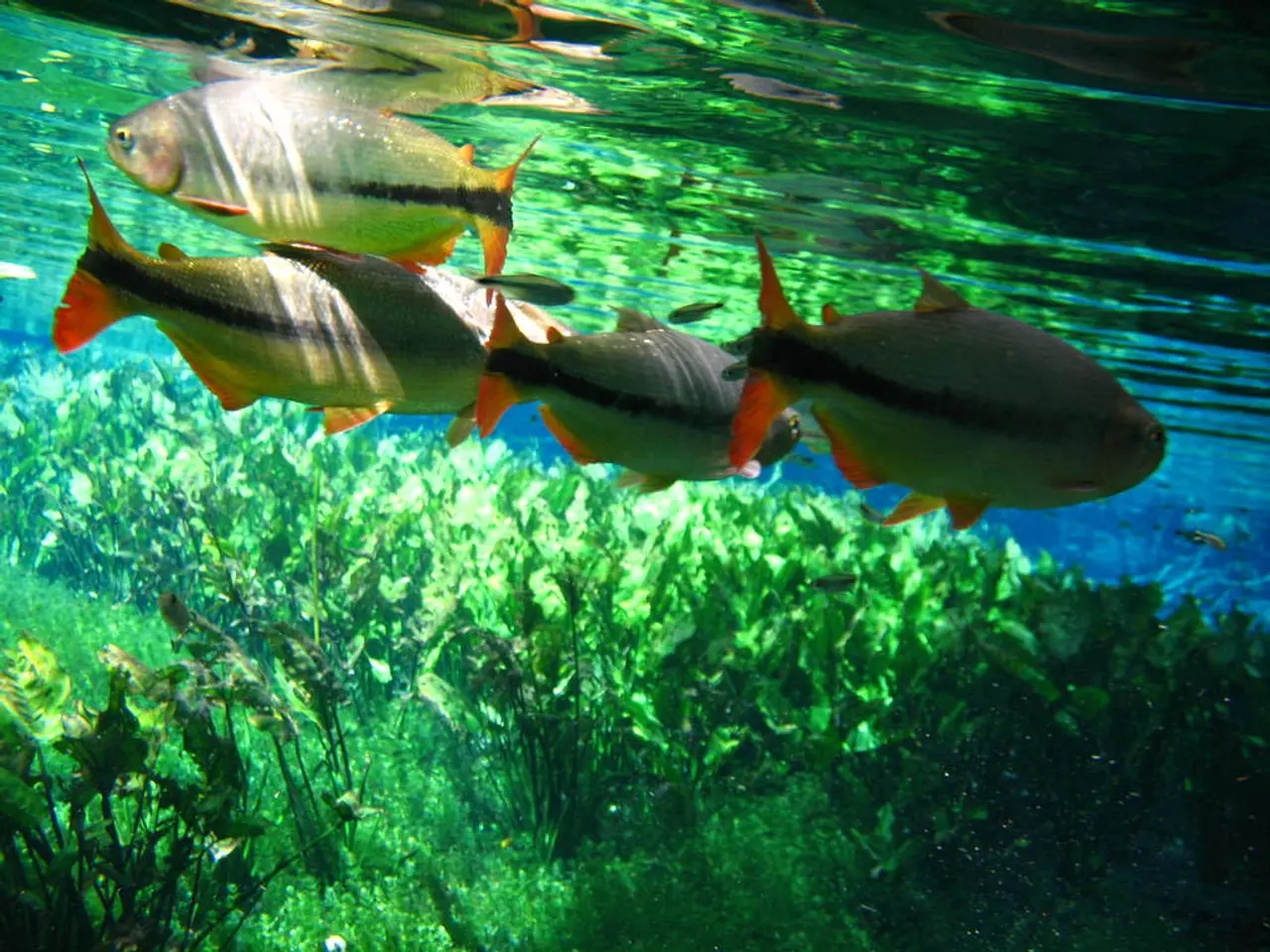Plankton Soar away, Evading Fish Predators
In the vast and complex world of marine life, a small yet significant discovery has shed new light on the intricate dynamics of marine food webs. Researchers have uncovered that copepods, a type of zooplankton, possess an extraordinary aerial escape mechanism that allows them to leap out of the water and travel up to 60 times their body length.
This behaviour, long overlooked by researchers, is particularly common among copepods in the family Pontellidae and has profound implications for our understanding of marine ecosystems. By evading predators effectively, copepods maintain their populations and, as major zooplankton grazers, sustain their role as a key component of the marine food web.
The discovery of this aerial escape mechanism has revealed that copepods use up to 39% of their kinetic energy to break through the water's surface tension. This high-acceleration swimming, one of the fastest escape responses in the animal kingdom, allows them to avoid capture by fish and other predators.
The aerial escape confuses predators about where the copepods will land, providing an additional survival advantage. Once airborne, copepods encounter much less resistance, allowing them to travel significantly further than they could underwater. This behaviour is particularly common among Pontellid copepods, which are relatively large (3mm) and brightly coloured, making them conspicuous to predators.
The energetic cost of aerial leaps is balanced against the risk of predation in copepods. This trade-off has likely shaped the evolution of their escape behaviours, resulting in behaviours that are both effective and efficient.
The researchers, led by Dr. Brad Gemmell and his team at the University of Texas in Austin, were intrigued by the seemingly paradoxical abundance of Pontellid copepods. This behaviour provides insights into the complex dynamics of marine ecosystems, emphasizing the importance of studying the air-water interface in marine ecosystems.
Copepods are a crucial food source for many commercially important fish species, such as cod, pollock, and whiting. The evolution of their escape behaviours influences predator-prey interactions, feeding dynamics, and energy transfer in marine ecosystems, ultimately affecting the structure and productivity of marine food chains.
In conclusion, the aerial escape mechanism of copepods is a remarkable adaptation that has a profound impact on marine ecosystems. It demonstrates how even the smallest organisms can evolve sophisticated strategies to survive in challenging environments. This research underscores the importance of continued investigation into the behaviours and adaptations of marine life to better understand and conserve our planet's oceans.
[1] Gemmell, B. W., et al. (2021). Leaping copepods confound predators and escape capture. Proceedings of the Royal Society B: Biological Sciences, 288(1949).
[2] Dabiri, J. O., et al. (2012). The physics of jumping: a review of jumping in animals. Journal of Experimental Biology, 215(18), 3032-3048.
[3] Dabiri, J. O., et al. (2008). Hydrodynamic interactions between jumping fish and their surrounding fluid. Journal of Fluid Mechanics, 619, 337-360.
[8] Gemmell, B. W., et al. (2019). The energetic cost of jumping in copepods. Current Biology, 30(4), R137-R138.
Technology can aid in the further study of the powerful aerial escape mechanism of copepods, ensuring a more accurate understanding of this evolutionary adaptation and its role in marine ecosystems. This newfound knowledge, in turn, can be applied to the ongoing efforts in environmental science to promote the conservation of aquatic life.
By developing more efficient and less invasive methods to observe and track copepod activity, like cameras or sensors submerged in the water, we can gather even more data about their behavior and adaptations, furthering our understanding of marine evolution.




